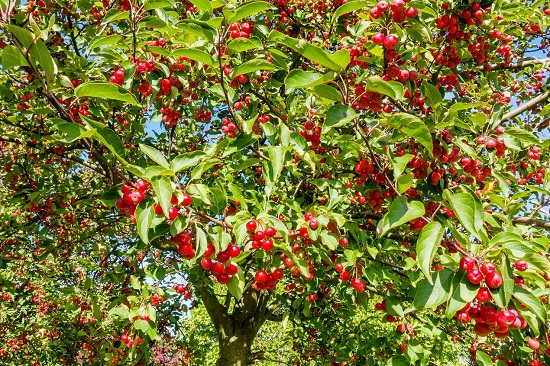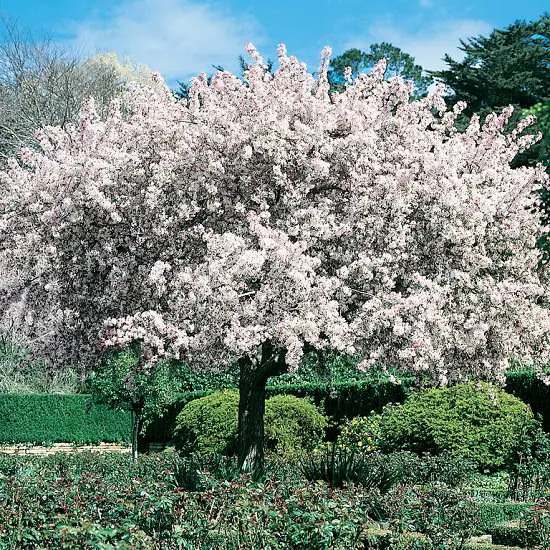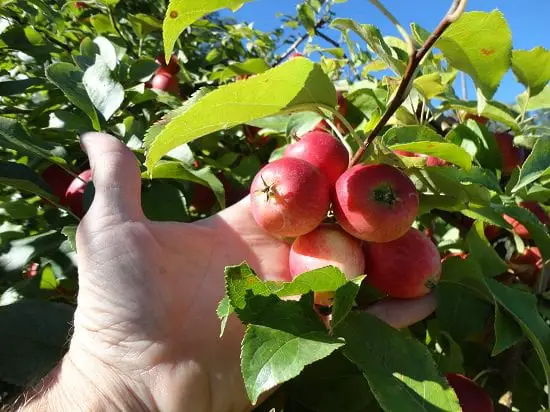Coming in a wide array of colorful varieties, these beautiful trees not only stand out but also bear fruits! Learn all about Crab Apple Tree Care here!

Crab apple is not just valued for its fruits but also for the colorful flowers it produces in spring. It is one of the best landscaping trees and quite popular in Europian countries. Almost all varieties produce fruits, but not all are edible. Mainly divided into two categories, ornamental and edible, their astonishing show of colors is unparalleled! Let’s know about Crab Apple Tree Care and requirements in detail!
Check out our article on growing apple tree in pots here!
Choosing a Variety
If you are looking for edible varieties, go for Butterball, Centennial, or Chestnut Crabapple. For ornamental purposes, Betchel crabapple is the best. Coralburst and Fireburst crab apples are best for small spaces as they are dwarf varieties and slow growers.
Propagating Crab Apple
You can buy the plant from a nursery or online. The best time to plant is spring, summer, or fall. Choose a site that gets 5-6 hours of sunlight a day. Dig a hole about twice the diameter of the root ball. Add peat moss and compost in the planting hole or potting soil to make it rich. Place the plant in the hole and cover the root ball completely with soil.
You can also grow it from cuttings. Take 5-6 inches cutting from a healthy tree, dip it in a rooting hormone, and plant it in a container. While waiting for the cutting to root, water it regularly to keep the soil moist.
Height and Placement
The tree attains a height of 15-25 feet with 10-15 feet of spread. Prior to planting, always select a place with good air circulation and sunlight. Dwarf varieties like Sargent Tina, Firebird, and Pink Princess grow up to 6-10 feet in height.
Here are some interesting and fun facts about trees we bet you never knew!
Requirements for Growing Crab Apples

Location
Crab apple loves to reside in full sun, similar to the other spring blossom trees. Lack of sunlight leads to a decline in the quality of flowers and fruits.
Watering
In the initial days, when the tree is not well established, it’s crucial to water regularly. Once established, the crab apple becomes drought-tolerant. Still, you’ll need to water regularly in harsh summertime to keep the tree healthy.
Soil
Crab apple prefers well-drained, fertile, and loamy soil. Although the trees are well adapted to other types too. If you are worried about the quality of the soil, add a lot of organic matter to improve the texture.
Here are some of the best dwarf ornamental trees you can grow!
Crab Apple Tree Care

Mulching
Spread a layer of about 2-4 inches of mulch around the base of the tree using wood chips, chopped leaves, and shredded bark. Loss of moisture due to heat can affect it’s growth adversely. Mulching not only traps the moisture but also prevents sunlight from overheating the topsoil.
Pruning
Carb apple does not have much pruning requirements. Just remove dead branches and suckers around early spring.
Fertilizing
For edible variety, if you have planted it in nutrient-rich soil, it is not required to feed the plants. If you notice stunted growth or fewer flowers, side-dress the tree with a layer of compost or aged manure. Organic fertilizers are also great for adding nutrients to the soil without affecting the ecosystem adversely.
For ornamental crab apple trees, use a 10-10-10 fertilizer. Make 5-6 inches deep hole at the base of the tree to fertilize. Follow the direction at the package for quantity.
Pests and Diseases
Apple scab and fireblight are some of the common diseases that affect crab apples. Apart from common garden pests such as aphids and scales, rabbits and mice can also be a cause of the trouble. Be vigilant about such pests!
Harvesting and Storage

Crab apples are ready to harvest from September to November. You can check the ripeness of fruits by the color of seeds. Dark brown indicate that the fruits are ready for harvest while white, greenish, or beige seeds indicate it needs more time to ripe.
Also, the color of the crab apple at maturity is also an indication for ripeness as different varieties have a signature color of the fruit when they are mature. A vibrant shade of red, yellow, green, or purple indicates that the fruit is good to go! You can also take a bite and see if the flesh is firm and crisp with a tad bit of tartness and sweetness.
To store, freeze them whole. Once they’re frozen, transfer to an airtight container.


